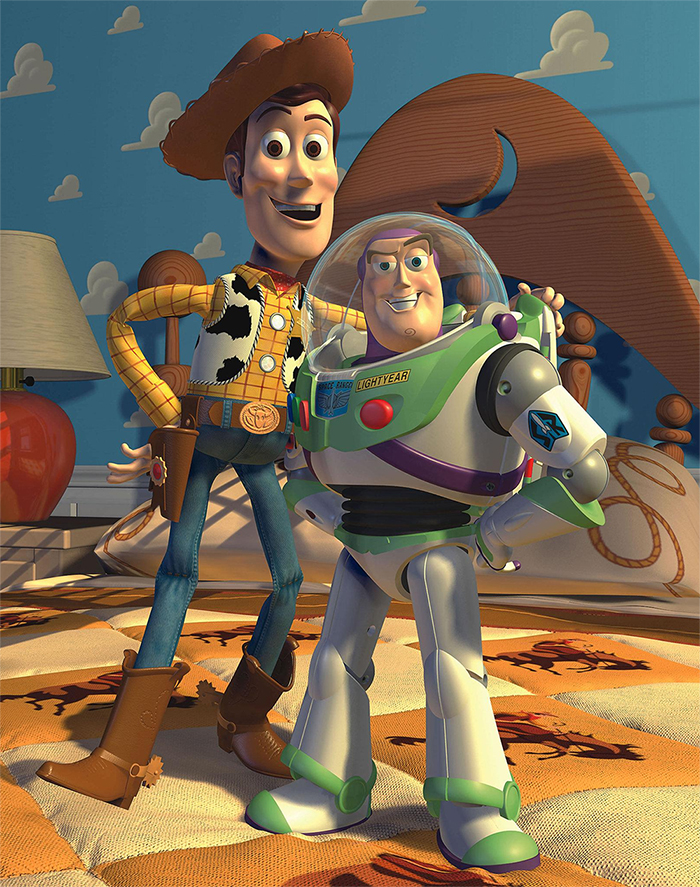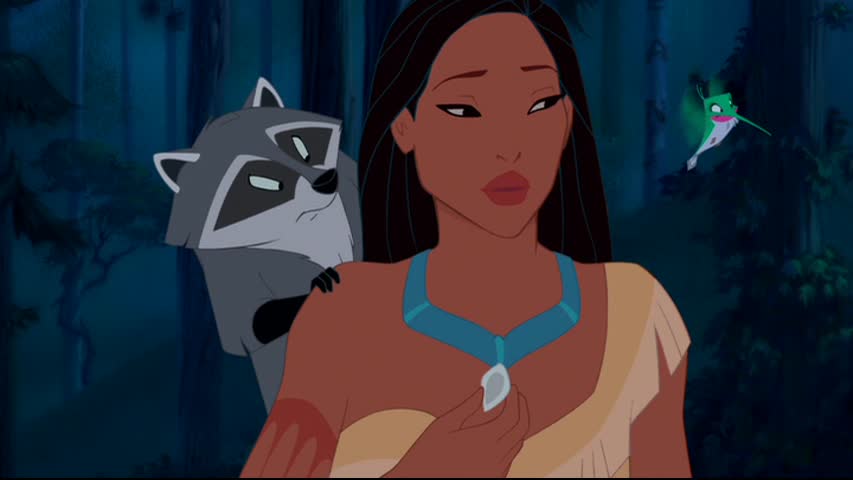 Tim here. We're celebrating 1995 this month at the Film Experience, and I'm ecstatic to bring the conversation around to that year's animated films. 1995 was, y'see, the most transformational year the animation industry had experienced in a generation, the dividing line between a 60-year-old tradition on one hand and the entirely different landscape of animated features in the twenty years since.
Tim here. We're celebrating 1995 this month at the Film Experience, and I'm ecstatic to bring the conversation around to that year's animated films. 1995 was, y'see, the most transformational year the animation industry had experienced in a generation, the dividing line between a 60-year-old tradition on one hand and the entirely different landscape of animated features in the twenty years since.
We have to begin even farther back. You can't tell a story about a revolution without looking at the ancien régime, and in '95, Walt Disney Feature Animation was as ancien as it gets. After having spent almost twenty straight years wandering around in the wilderness following namesake Walt Disney's death, the studio finally began righting itself through a painful learning process that started with the 1986 release of The Great Mouse Detective. Beginning with that movie, almost every subsequent Disney feature would improve upon the box-office take of its immediate predecessor.
This was the Disney Renaissance, when the studio just couldn't stop itself from cranking out one new classic after another. There was Beauty and the Beast, the only animated film nominated for the Best Picture Oscar in a field of 5; Aladdin, the first animated film to break $200 million at the U.S. box office; and then, the hit of all hits, 1994's The Lion King, a blockbusting monster that is, for many, the defining film of contemporary American animation. The company was at the all-time height of its influence and prestige. There was nowhere to go but down.
And down things went, with Pocahontas in June, 1995...

It fizzled with audiences, relatively – though a respectable hit, it didn’t even outgross Beauty and the Beast. It fizzled with critics – it's at this writing the only 1990s Disney film with a rotten score on Rotten Tomatoes. This was despite being the basket that the studios was piling all its eggs into. In fact, during their respective productions, Pocahontas was the "prestigious" film to work on, and the people who ended up on The Lion King knew that they were merely the B-Team.
Nostalgia and time have led the film to grow a little cult for itself, but it's not hard to see why Pocahontas thudded. It's monumentally serious, with characters, seemingly designed without the ability to smile, leadenly discussing great big sociological themes.

And, fatally, it entirely fails to make good on those themes: it's one of the most pandering "the Native Americans were very noble and they talked to trees and loved the earth" message movies for white people of the post-Dances with Wolves era, while also trying to act like racism is absolutely not something that ever happened after the 1610s. It's medicinal in every way: there aren't even any memorably peppy songs, a year after The Lion King had virtually its entire soundtrack turn iconic all in one go.
It is, in effect, when Disney's massive success turned into bloat, and it was all downhill from here, only bottoming out a full decade later with the heinous Chicken Little. But even if the studio's short-term demise was a good while in the future, it had suddenly become obvious that there was room in the marketplace for a successor.
And ironically, Disney provided that successor itself by distributing Pixar Animation Studio's Toy Story, the world's first fully CGI animated feature.

Twenty years on, the children of Toy Story have so thoroughly colonized the world that traditional animation in the States is a novelty on par with seeing a Siberian tiger in the wild, but that future didn't unfold just because a new technology happened to come along. It's because Toy Story is everything Pocahontas wasn't: a brightly-paced comedy with fun-looking characters doing funny things, speaking in emotionally blunt terms about childhood and friendship without a trace of morally haranguing the audience.
The proof is still there for anyone to see. Toy Story looks indefensibly primitive, not just next to Pixar's long string of technological game-changers, but even next to the cheapest CGI cartoons that are able to finagle a commercial release, while Pocahontas looks every bit as lush and stately as it did in '95.

But even through its blocky, uncannily smooth surfaces, Toy Story is also still enormously watchable: the jokes land, the feelings land even harder, and the note-perfect voice cast still sounds so perfectly matched to the little plastic figures onscreen that it's hard, when you're watching it, to remember what Tom Hanks actually looks like. Whereas watching Pocahontas is a squirmy exercise in the period in time that Mel Gibson could be called upon to contribute to a family movie.
Toy Story would become the highest-grossing film of 1995, while launching a franchise that Pixar returns to even now when their fortunes look low (who's excited for 2017's Toy Story 4? Sure as hell not me!). Pocahontas is one of the films that sometimes get slapped on as a parenthetical to the Disney Princess line, and is shoved away in some dark, unvisited corner of the Disney theme parks. The difference between the two films is about the essentials: storytelling, characters, basic audience appeal. But to Disney and a host of newly emboldened competitors, the difference was that one was hand-drawn and one was made on computers. And from that interpretation sprang the history all of subsequent theatrical animation in the United States, down to the present day.
